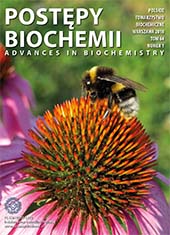Gene editing
DOI:
https://doi.org/10.18388/pb.2018_99Abstract
Development of the gene engineering techniques has raised worries that they will be used for construction of organism endangering humans
and environment. In 1975 at the Asilomar conference, geneticists from many countries decided that genetic engineering brings more benefits
than threats. In last years a new CRISPR-Cas technique emerged . It allows to make the precise changes in genomes, e.g. to inactivate particular
genes or to replace mutated genes by their wild-type alleles. Inactivation in mice of genes corresponding to those whose mutations cause
the genetic diseases in man allows to get model organisms for studying the etiology of given disease and for working out the methods of its
curing. This technique can be applied for repairing genes whose mutations result in metabolic diseases and cancer. Some voices were raised
that the technique can be potentially used for the âimprovement” of man, what would create many ethical and social problems. Geneticists,
ethicists and lawyers gathered in 2015 at the Washington conference, discussed these problems and proposed rules for their solving.
Downloads
Published
Issue
Section
License
All journal contents are distributed under the Creative Commons Attribution-ShareAlike 4.0 International (CC BY-SA 4.0) license. Everybody may use the content following terms: Attribution — You must give appropriate credit, provide a link to the license, and indicate if changes were made, ShareAlike — If you remix, transform, or build upon the material, you must distribute your contributions under the same license as the original. There are no additional restrictions — You may not apply legal terms or technological measures that legally restrict others from doing anything the license permits.
Copyright for all published papers © stays with the authors.
Copyright for the journal: © Polish Biochemical Society.




